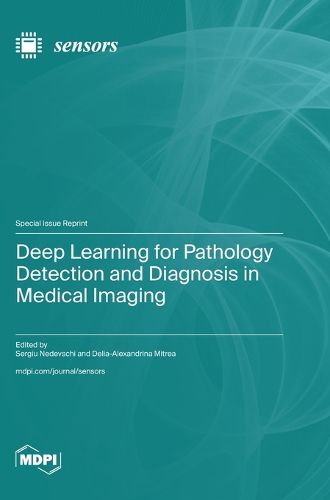Readings Newsletter
Become a Readings Member to make your shopping experience even easier.
Sign in or sign up for free!
You’re not far away from qualifying for FREE standard shipping within Australia
You’ve qualified for FREE standard shipping within Australia
The cart is loading…






This title is printed to order. This book may have been self-published. If so, we cannot guarantee the quality of the content. In the main most books will have gone through the editing process however some may not. We therefore suggest that you be aware of this before ordering this book. If in doubt check either the author or publisher’s details as we are unable to accept any returns unless they are faulty. Please contact us if you have any questions.
Severe pathologies, such as the diffuse liver diseases or tumors, can lead to the significant degradation of the human health and sometimes to lethal stages. The most reliable methods for the diagnosis of these affections, such as the classical biopsy or surgery, are invasive and dangerous. Advanced computerized methods are urgently needed to reduce invasiveness and enhance the information derived from medical images as much as possible by unveiling their subtle aspects, conducting to a virtual biopsy. Computer Vision and Machine Learning can be successfully employed to achieve this target. Thus, advanced image analysis combined with conventional machine learning, as well as the deep learning techniques, can lead to a highly accurate automatic diagnosis process. The corresponding features, together with the classification, segmentation, fusion of multiple image modalities, and 3D reconstruction techniques, can be involved in the achievement of appropriate 2D and 3D models for the considered affections, which are helpful in computer-aided diagnosis and surgery. The purpose of the special issue "Deep Learning for Pathology Detection and Diagnosis in Medical Imaging" is that of offering the opportunity to disseminate valuable and original results achieved in the corresponding field, surprising the latest, deep-learning techniques, eventually compared and combined with conventional methods.
$9.00 standard shipping within Australia
FREE standard shipping within Australia for orders over $100.00
Express & International shipping calculated at checkout
This title is printed to order. This book may have been self-published. If so, we cannot guarantee the quality of the content. In the main most books will have gone through the editing process however some may not. We therefore suggest that you be aware of this before ordering this book. If in doubt check either the author or publisher’s details as we are unable to accept any returns unless they are faulty. Please contact us if you have any questions.
Severe pathologies, such as the diffuse liver diseases or tumors, can lead to the significant degradation of the human health and sometimes to lethal stages. The most reliable methods for the diagnosis of these affections, such as the classical biopsy or surgery, are invasive and dangerous. Advanced computerized methods are urgently needed to reduce invasiveness and enhance the information derived from medical images as much as possible by unveiling their subtle aspects, conducting to a virtual biopsy. Computer Vision and Machine Learning can be successfully employed to achieve this target. Thus, advanced image analysis combined with conventional machine learning, as well as the deep learning techniques, can lead to a highly accurate automatic diagnosis process. The corresponding features, together with the classification, segmentation, fusion of multiple image modalities, and 3D reconstruction techniques, can be involved in the achievement of appropriate 2D and 3D models for the considered affections, which are helpful in computer-aided diagnosis and surgery. The purpose of the special issue "Deep Learning for Pathology Detection and Diagnosis in Medical Imaging" is that of offering the opportunity to disseminate valuable and original results achieved in the corresponding field, surprising the latest, deep-learning techniques, eventually compared and combined with conventional methods.